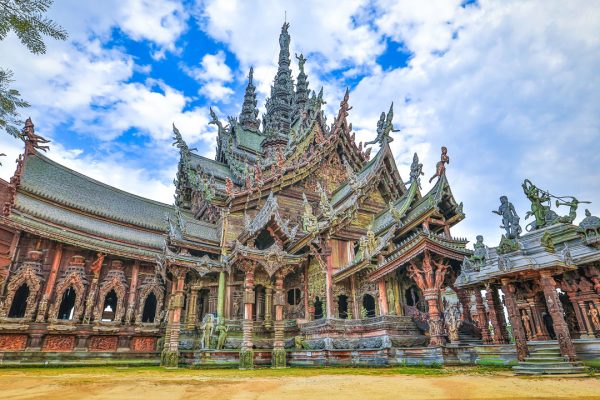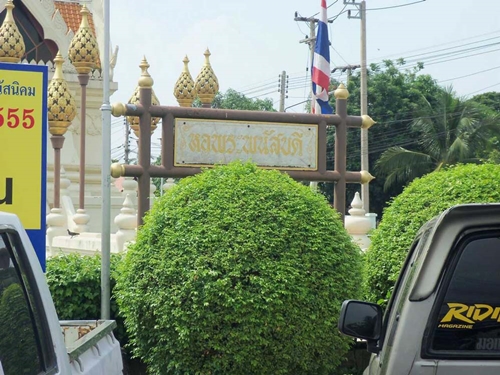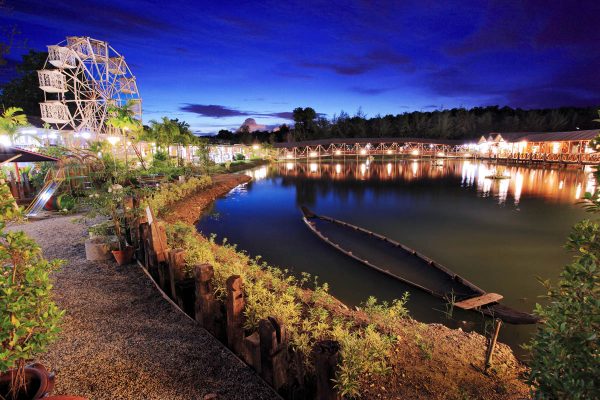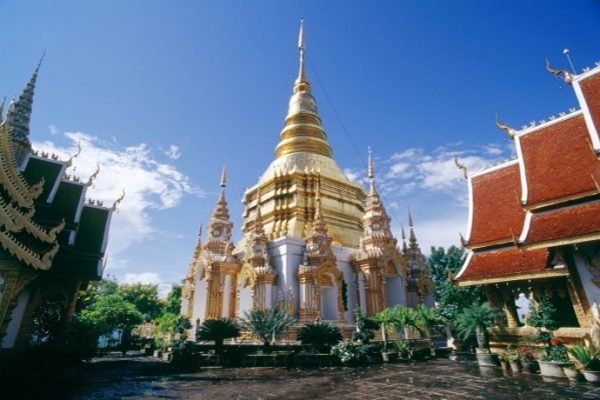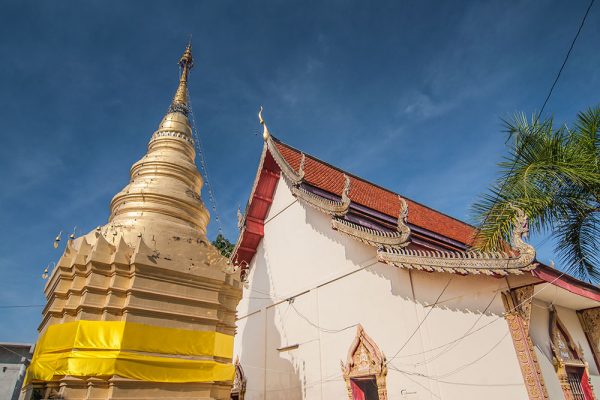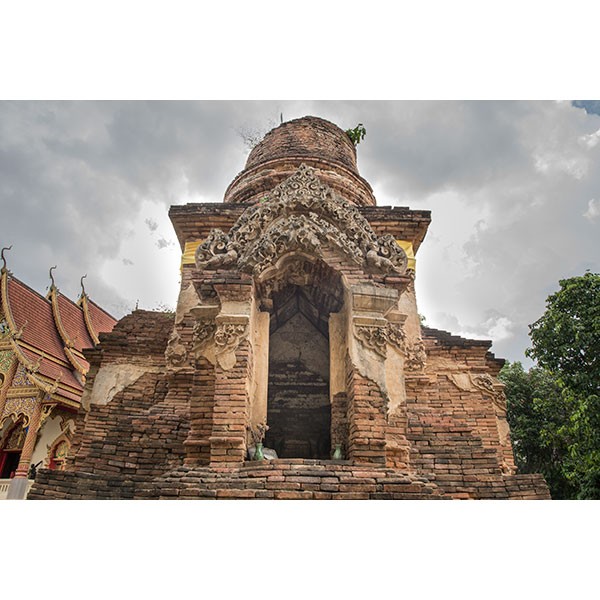
The archaeological site of Kho Klang temple
The Archaeological site of Kho Klang Templeis located in Baan Reun Subdistrict, Pah Sang of Lampoon District which is simply about 20 kilometers away from the city town. It is considered as the temple in Lampoon Province which some debris of Archaeological Site were found in the most perfect condition. In the old days, “the Kho Klang Temple” was abandoned until the time, in 2517 B.E., when “Phra Maha Sa-nguan Panya” from the Chedi Luang Chaing Mai Temple and “Phra Maha Duangchan Kiewpant” from the Phra Sri Mahathat Temple together with “Phra Udom Boonchuiy” from the Nong Doo Temple together develop the temple to the place for practising Dharma. Later in 2522, the Department of Religious Affairs announced the temple for monks to stay. At the front of the image hall standsthe swan post as a memorial to “Hanthawadi” which is the capital of the Mon in Burma because there are a number of the Mon living in the neighborhood of the temple. Besides, in the latest archaeological excavation in 2548 B.E., the beautiful and prominent religious building was found; that is, the presiding Chedi. It is built from bricks in the shape of palace with its top in the shape of a big bell. There are fourdoor facades and the facade which most prominently protrudes is called Kanpathat which is in style contemporary with Dvaravati period which is claimed by some art historians that the chedi is the one found in the Northern of Thailand. Another prominent feature of the temple is that the facades are decorated with exquisite sculptures in the shape of animals in the Himmavanta such as Makara, qilin and Naka with the pattern of Buacheong, the pattern of Bua collar of shirt and the pattern of variety of plants like bunches of vine or called “the pattern of bunches of Lanna”. All in all, it is presumed that the presiding Chedi was supposed to be built dating back to the late of the Hariphunchai period, at least, due to the discovery of the inner base of the Chedi which is very ancient built at least in the early Lanna period; however, it is supposed that it went under the reconstruction in the Lanna period so the base was covered by the new chedi. According to the archaeological excavation, we can acknowledge that the archaeological site of Kho Klang temple can be traced for ancient remains, for examples, the debris of the base of Ubosot, the wall, pool, door facade at the east side and religious buildings which are located outside the wall that still are in complete condition. The outside area near the temple was found the Chedi which is quite big and is in an octagon shapeand quite round. It is located along the road and is called by the local people that “the Maita Chedi” for the symbol reminding the travelers by water that they are nearly arrive the Kho Klang Temple. At the north side, there is a prominent Chedi which is Ruenthat supported by the center post that is the style that has never been found in any archaeological sites in Thailand; that is, the Chedi is situated amidst water with its round base at the south side which is the Dvaravati architecture of Buddhist era of 10th-14th. The Chedi is used for religious ritual. Its sculpture is very beautiful supposed that it is the craftsmanship of royal craftsmen in the golden period of Lanna Regime. At the Northwest side in the neighborhood of Baan Bo Kao was found a mound which the local people call that “the widow mound”. The folklore has it that the area was located the house of the Intamillionaire and the location that Pra Nang Chamdevi was born. There are a lot of wrecks of bricks on the mound. There are also a number of ancient remains that were found, for instance, the Naka sculpture decorated with pattern of Buddhist prayer beads and the pattern of Makara which are of master level similar to that of Dvaravati Arts.Inside the temple, there is also a small building for exhibition of sculptures which were found in the temple such as the ancient head of the Buddha image dating back to the Hariphunchai period of the Buddha era of 14th-16th to the Lanna Regime, the votive tablet of Hariphunchai period, the 23 of ancient steles, pottery dating back to about 19th-20th of Buddhist Era to the Lanna period. However, all of the archaeological site of the Kho Klang Temple are under the archaeological process of excavationand digging out. It is probably that the important history will be found relevant to the history of Pra Nang Chamdevi who was the first Queen of Hariphunchai Regime.

